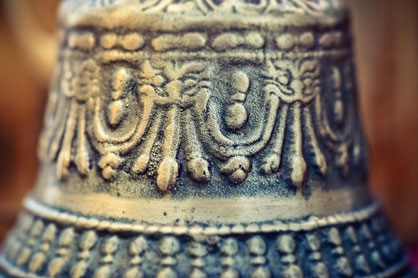
A Brief History
Engraving has been practiced as early as the beginning of the first millennium B.C.E. as evidenced by the designs of jewelry that dates to that period, which predominantly consist of shallow grooves on surfaces. Before artisans of the ancient times learned the art of engraving, they first used more traditional methods, such as lost-wax casting and chasing, to create designs on jewelry pieces.
In lost-wax casting and chasing, the designs are made by casting metal instead of engraving it, hence the name. A model is made out of wax, clay, or any moldable material. Then a mold made of a rigid outer layer and a softer inner one made of the original wax model. Molten wax is again poured into the mold and swished around to achieve an even coating on the surface of the mold. When the mold is smooth enough, the parting line or flashing where the pieces of the mold came together are slowly chased. Several other processes follow until an output is obtained.
While this method is still vastly practiced in modern-day metalworking, engraving into metal has become a more popular alternative since its discovery in the first century B.C.E. at least in cutting decorative figures on metal and glass surfaces. Products of engraving continued to appear for over 400 years since then but production eventually stalled sometime in the fifth century.
During the Middle Ages, goldsmiths in Europe started using engraving to decorate metalwork and print impressions of their designs for record-keeping purposes. This gave birth to the practice of producing artistic images on paper using engraved copper printing plates. Engraving became the main technique used for reproducing artworks until the advent of photography in the late 1800s.
Intaglio vs. Relief
Printing techniques can be classified according to which section of the matrix (the mold used to cast text and images on an object’s surface) the design is engraved and holds the ink. A technique is called intaglio printing if the image is incised into a surface and the incised line or sunken area holds the ink. It’s called relief printing if the protruding section of the matrix is the one that holds the ink.
The recessed area on the matrix can be created either by etching or by engraving. In etching, the metal plate to be turned into a matrix is pre-covered with an acid-resistant coating. The design or image is engraved on the coating to expose the metal surface. Acid is then methodically applied on the exposed area of the metal to corrode it until the desired design appears. In engraving, no corrosive substance is involved. The design or its negative is manually engraved on the surface of the metal plate using a burin.
How to Engrave Metal
The first step to engraving brass, copper, and other malleable and ductile metals is knowing the different tools you can use and understanding how they work. You should also know which types of metal are ideal for engraving or simply, which ones your tools can cut comfortably. The main tool used by engravers to cut metal engraving designs is called burin or graver. This tool is generally made of steel or other alloys that are harder than the metal plate to be cut. Those that do engrave metal pieces may find some sections of their material inaccessible in which case they employ engraving machines to help them out.
Burins come in different shapes and sizes, each of which produces different kinds of lines. Depending on the intricacy of the design you would like to cut on your metal piece, you might need several types of gravers. As for you metal piece, you have to make sure that it’s soft enough for the tools and machines you’re going to use. Otherwise, your graver might break. If the point of your burin breaks even on a microscopic level, it will become hard to control. Fortunately, there’s an array of metals that you can engrave, including silver, nickel, steel, brass, gold, and even titanium.
Most metal engraving how to tips you’ll find online make the process look so easy but in truth, it takes skills and creativity to actually engrave designs with both accuracy and precision. Even with the aid of automatic hand-pieces that only require controlled push, the odds of applying excessive pressure is too high for those who don’t have enough training and experience.
Apart from knowing how to do metal engraving, you must also know how to choose your metal plate. When it comes to that, a different set of skills and experience is required. Thankfully, if you go to prominent copper and brass suppliers like Rotax Metals, you’ll get all the help you need from metal experts in order to pick the perfect metal for your project. In their catalog you’ll find an entire section of metals that are suitable for engraving. They can even help you identify the metals that might damage your tools.
Sources:

